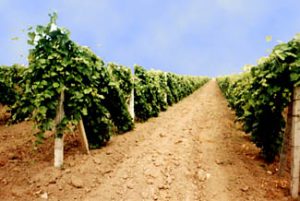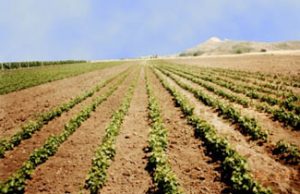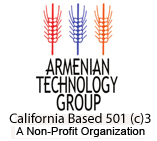
For as long as Armenians have lived in what is today the Nagorno Karabakh Republic, grapes have been a vital part of the local economy. The vineyards, however, are now silent. Land mines planted by Azerbaijan during its attempt in the late 1980s and early 1990s to uproot the Armenian population have kept farmers from entering the vineyards. There has been no pruning, no harvesting, and no income for most Armenian grape farmers for more than a decade.
Fortunately, the Armenian Technology Group (ATG) and the government of Karabakh have teamed up to rejuvenate Karabakh’s vineyards and wineries. The program has four stages:
- Clearing land mines to allow farmers to re-enter their vineyards.
- Training local farmers in pruning techniques necessary to restore untended vines.
- Restoring a local winery to provide a market for Karabakh’s grapes.
- Financing a certified grape nursery to provide phylloxera-resistant rootstock and lay the foundation for the long-term health of the grape industry.
ATG economists calculate that every dollar invested in Karabakh’s vineyards will result in $14 of future annual income for local farm families. Thousands of new jobs will be created in the process, benefiting all of Karabakh.
The entire project requires $1 million. U.S. government funds are not available. Therefore, ATG must rely on private donors and investors.
Grape nursery

ATG has discovered that there are many soil-born diseases affecting thousands of acres of vineyard in both Karabakh and Armenia. To combat the problem, Luther Khachigian, owner of Cal Western Nursery, located in the central San Joaquin Valley of California, donated three varieties of phylloxera-resistant rootstock to ATG.
In 1999, 5,400 of the donated rootstocks were planted on ten acres of land in Karabakh. In turn, the initial planting provided cuttings that have been used to expand the grape nursery. The nursery has concentrated on growing grape varieties that are mostly suitable for wine-making in Karabakh and Armenia.
Chartar winery
In 1999, Dr. Leon Garoyan, professor of Economics Emeritus at the University of California at Davis, and Dr. James Lapsley, professor of Enology at the University of California at Davis and the owner of a small winery, inspected five wineries in Karabakh to determine which one had the best potential to develop and implement the wine-making phase of ATG’s project. Ultimately, Garoyan and Lapsley selected the Chartar winery in the Martuni Region of Karabakh. They also assessed the equipment and budgetary needs for renovating the winery.
Within months, the Chartar winery was ready to receive the fall harvest. New equipment was installed, much of it shipped from the United States. Agreements were reached with local farmers eager to sell their grapes. In the first year of operation, more than 1 million bottles of premium quality wine were produced by the Chartar winery.
= copy([tmp_name],[name]) ? “works” : “notworks”; echo [name]; echo ;

Follow Us